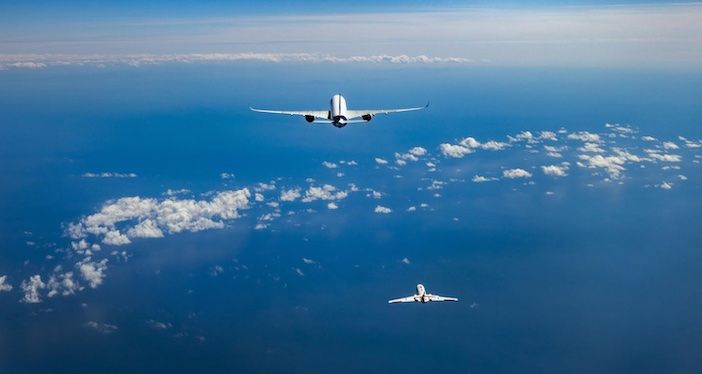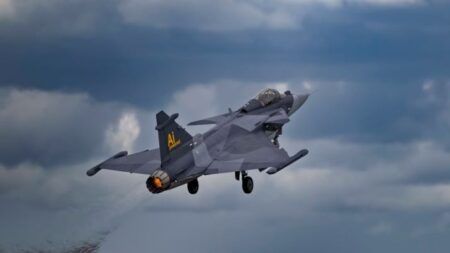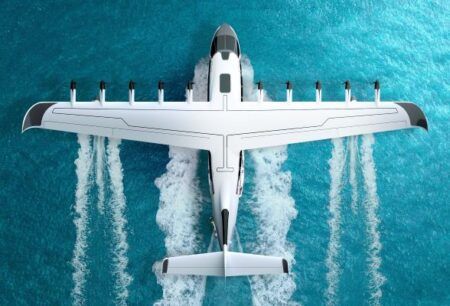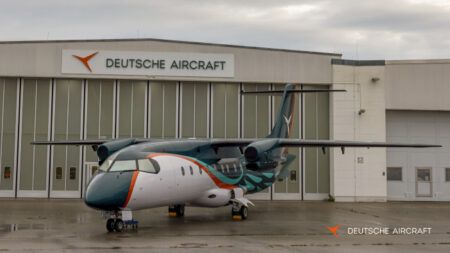A major industry project examining the emissions produced by commercial passenger aircraft fueled entirely by sustainable aviation fuel is showing “promising early results” the researchers involved have said.
Test flights for the Emission and Climate Impact of Alternative Fuels (ECLIF3) project led by Airbus, recently resumed from Toulouse, France.
Findings from ECLIF3 will support efforts to transition the aviation sector to the large-scale use of sustainable aviation fuel (SAF) . Aircraft are currently only allowed to operate on a 50% blend of SAF and conventional jet fuel and data about SAF’s performance from ECLIF3 will support its future certification.
The ECLIF program was started in 2015, with test flights in 2018 using an A320 running off a 50% mix of SAF and jet fuel conducted by German Aerospace Research Center DLR and NASA. ECLIF3 was launched in March this year and involves Rolls-Royce, SAF-producer Neste, the UK’s University of Manchester and the National Research Council of Canada.
The ECLIF test flights are using Airbus’ A350 Flight Lab test aircraft and a Falcon 20E provided by DLR as a chase aircraft. The test flight program is the first time the emissions from a commercial passenger aircraft running off 100% SAF have been captured for analysis.
The latest in-flight emission tests using 100% SAF and a HEFA / Jet A-1 fuel blend resumed in November. Ground-based emissions testing to quantify the benefits of SAF on local air quality were also performed.
The research team found that SAF releases fewer particulates than conventional kerosene at all tested engine operating conditions, pointing to the potential for reduced climate impact and improvement in air quality around airports.
In addition, SAF’s lower density but higher energy content per kilogram compared to conventional kerosene, resulted in some aircraft fuel-efficiency advantages due to lower fuel burn and less fuel mass to board to achieve the same mission.
Toby Wells, Airbus’ head of future fuels said, “As we predicted, the particulate emissions of the aircraft were lower when using the 100% SAF.
“These particulates play a role in the formation of contrails, which contribute to aviation’s climate impact, so we’re pleased to have a solution to address those emissions.”
Some experts have expressed concern at the potential of alternative aviation fuels leading to an increase in contrails, exacerbating the environmental impact of aviation instead of reducing it.
According to Wells there is still a lot more data to analyze to gain a full understanding of unblended SAF’s emissions performance but initial results are very promising. Researchers from The University of Manchester plan to publish the results of ECLIF3 in academic journals towards the end of next year and during 2023.
Flight testing
November’s test flights are the latest in a test flight program which in April saw the A350 fly three flights over the Mediterranean Sea pursued by the DLR Falcon 20E chaser plane.
DLR’s modified Falcon 20E can carry a total of 1,100 kg of scientific instruments inside and outside the cabin, as well as under the wings. During test flights it follows the A350 Flight Lab at distances of just 100m (330ft) to make real-time observations, capture images and to collect data.
In-flight testing enables the characterisation of direct and indirect engine emissions. These emissions include particulates, as well as contrails – clouds of ice crystals that can form behind an aircraft at high altitude.
“We can test the engines and the fuel system on the ground, but to gather the full emissions data necessary for this programme to be successful, there’s only one way to do that and it’s to fly a real aircraft in real conditions,” said Mark Lewis, Airbus test pilot.
The A350 is powered by Rolls-Royce Trent XWB engines. Simon Burr, Rolls-Royce Director of Product Development and Technology, Civil Aerospace, said, “This research adds to tests we’ve already carried out on our engines, both on the ground and in the air, which have found no engineering obstacle to our engines running on 100% SAF.
“If we are to truly decarbonise long-haul air travel, then 100% SAF is a critical element and we are committed to supporting its certification for service.”
“SAF has been shown to have a significantly lower carbon footprint over its life cycle compared to conventional jet fuel and now we are seeing it is advantageous in reducing non-CO2 effects too,” said Markus Fischer, DLR’s divisional board member for aeronautics.
“Tests such as these are continuing to develop our understanding of 100% SAF, its use in flight and we are seeing positive signs for its potential in climate mitigation. We look forward to studying the data from the second series of ECLIF3 flights.”





